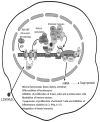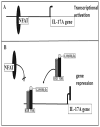Biology and Mechanisms of Action of the Vitamin D Hormone
- PMID: 29080638
- PMCID: PMC5762112
- DOI: 10.1016/j.ecl.2017.07.001
Biology and Mechanisms of Action of the Vitamin D Hormone
Abstract
The central role of hormonal 1,25-dihydroxyvitamin D3 [1,25(OH)2D3] is to regulate calcium and phosphorus homeostasis via actions in intestine, kidney, and bone. These and other actions in many cell types not involved in mineral metabolism are mediated by the vitamin D receptor. Recent studies using genome-wide scale techniques have extended fundamental ideas regarding vitamin D-mediated control of gene expression while simultaneously revealing a series of new concepts. This article summarizes the current view of the biological actions of the vitamin D hormone and focuses on new concepts that drive the understanding of the mechanisms through which vitamin D operates.
Keywords: Calcemic hormones; Genetic linkage; Genome-wide principles; Mineral homeostasis; RANKL; Target genes; Transcription; Transient receptor potential vanilloid type-6 (TRPV6).
Copyright © 2017 Elsevier Inc. All rights reserved.
Figures





References
-
- Melanby E. An experimental investigation on rickets. Lancet. 1919;1:407–412.
-
- McCollum E, Simmonds N, Becker J, Shipley P. An experimental demonstration of the existence of a vitamin which promotes calcium deposition. J Biol Chem. 1922;1922:293–298. - PubMed
-
- HSHB Fat soluble vitamins. XVII. The induction of growth promoting and calcifying properties in a ration by exposure to ultraviolet light. J Biol Chem. 1924;61:405–422.
-
- Windaus A, Schenck F, von Werden F. Uber das antirachitisch wirksame bestrahlungs-produkt aus 7-dehydrocholesterin. Hoppe-Seyler’s Z Physiol Chem. 1936;241:100–103.
-
- DeLuca HF. Overview of general physiologic features and functions of vitamin D. Am J Clin Nutr. 2004;80(6 Suppl):1689S–1696S. - PubMed
Publication types
MeSH terms
Substances
Grants and funding
LinkOut - more resources
Full Text Sources
Other Literature Sources
Medical

